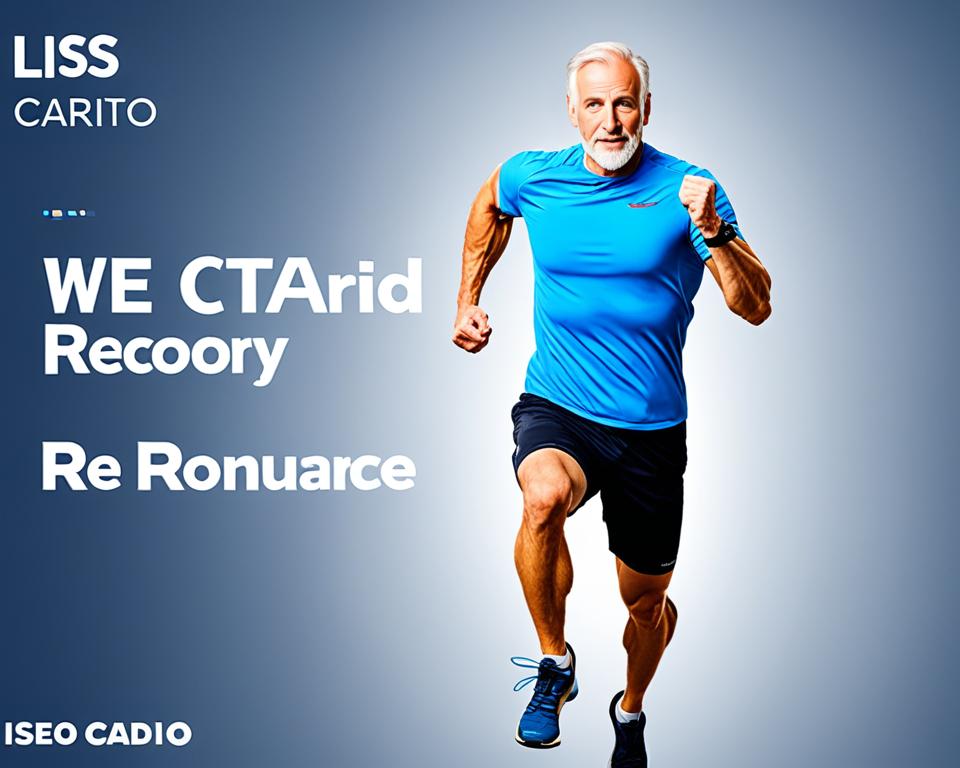
How To Incorporate LISS Cardio To A Strength Training Program
“Physical fitness is not only one of the most important keys to a healthy body, it is the basis of dynamic and creative intellectual activity.” These words by John F. Kennedy highlight the value of adding LISS cardio to a strength training plan. By combining endurance and strength, you can create a balanced health routine. This combination may seem hard, but with proper advice, learning how to incorporate LISS cardio into a strength training program becomes easier and leads to better fitness.
When I explored a combined training program, I found out LISS, or Low-Intensity Steady-State cardio, is quite beneficial. It suits both beginners and advanced athletes, offering a way to not only improve your look but also boost your health.
Adding cardio to your plan should be done with care, much like composing a piece of music. Whether you aim to lose weight or strengthen your heart, mixing in cardio for strength gains means adjusting your routine to fit your own needs and goals.
Key Takeaways
- Unlocking the synergy between LISS cardio and strength training leads to comprehensive fitness results.
- Practical tips on incorporating LISS into strength programs cater to various fitness levels
- Explain the nuances of LISS for those seeking a fusion of endurance and strength.
- LISS serves as a platform for everyone, from beginners to pros, in their quest for a balanced routine.
- Leverage an understanding of how LISS can complement strength training, ensuring optimized health benefits.
Understanding LISS Cardio and Its Place in Strength Training
LISS cardio includes activities like leisurely cycling or brisk walking. It operates at 50 to 70 percent of your max heart rate. This is key for balancing strength training with cardiovascular fitness. Maintaining this balance is also a part of the federal physical activity guidelines. They recommend 150-300 minutes of moderate exercise every week. Beyond boosting your heart rate, LISS cardio fosters a healthier lifestyle. It improves cardiovascular health and is great for anyone looking to enhance their fitness.
Defining Low-Intensity Steady-State (LISS) Cardio
LISS cardio is perfect for beginners or those looking for less intense workouts. It aligns with personal comfort levels while boosting endurance and strength. Unfortunately, obesity rates were high in the United States from 1999-2004. LISS cardio offers an accessible way to counter these trends. It’s a practical and lasting way to exercise for everyone.
The Fundamentals of Strength Training and Cardio Balance

In strength training, keeping muscle mass is very important. Adding LISS cardio helps achieve this. Following liss cardio guidelines ensures sessions are consistent and manageable. This is especially beneficial for older adults with type 2 diabetes. Research shows that combining resistance training with LISS improves glycemic control. Embracing LISS can aid in managing diabetes while promoting overall strength and endurance.
Contrasting LISS with High-Intensity Training
LISS cardio builds a sustainable aerobic foundation, while HIIT focuses on quick, intensive workouts. Both have their place in weight management and metabolic health. A study on obese adults found significant effects on visceral fat from different exercise types. However, striking the right balance between strength training and LISS cardio is essential. This balance supports cardiovascular health and muscle growth, achieving a well-rounded routine.
How To Incorporate LISS Cardio To A Strength Training Program
Mixing Low-Intensity Steady-State (LISS) cardio with strength training creates a balanced fitness routine. LISS cardio is perfect for improving heart health while keeping muscle. It’s important to blend LISS cardio into your workouts smartly for the best results. This ensures you meet both endurance and strength goals. Additionally, incorporating LISS sessions on active recovery days can boost blood flow and aid muscle repair, complementing your strength gains. When you mix cardio and weight training, you create a synergistic effect that enhances both cardiovascular endurance and muscular strength. Consistency and proper recovery are key to reaping the full benefits of this combined approach.
Assessing Your Current Fitness Level
Start by evaluating your fitness level. Know your cardiovascular health, muscle strength, and endurance to choose the right LISS intensity. For beginners, start with brisk walking. Increase your session time as you get fitter to maintain progress and control weight.
Strategizing LISS Cardio within Your Workout Regimen
Plan how to fit LISS cardio into your routine. The goal is to match LISS sessions with strength training for recovery and fat loss. For example, a 45-minute bike ride on leg day helps ease soreness and improves leg recovery.
Creating a Weekly Training Schedule for Optimal Benefits
Creating a weekly plan is key to fitness success. Blend LISS with two to three days of strength training. This mix boosts your aerobic health and strengthens muscles. It’s important to stay consistent but mix things up to avoid plateaus and stay healthy.

| Benefit | Activity Level | Impact |
|---|---|---|
| Cardiovascular Disease Risk Reduction | >150 mins/week moderate activity | Lowered risk, further reduced with increased activity |
| Decreased Risk of Type 2 Diabetes | Regular physical activity | Significant risk reduction with additional activity |
| Reduced risk of flu-related mortality | Aerobic and muscle-strengthening as per guidelines | 50% lower compared to inactive individuals |
| Hip Fracture Risk | Regular physical activity | Lower risk compared to inactive individuals |
| Prevention of Deaths | Increase moderate-to-vigorous activity | Could prevent an estimated 110,000 deaths/year |
Following the advised exercise levels improves overall health. Adding LISS cardio to your strength program helps with muscle and endurance. It also promotes a healthier heart, reducing disease risks. Such changes can also improve lifespan and life quality, showing the importance of LISS in a fitness regimen.
LISS Cardio Techniques for Enhancing Strength Gains
Using liss cardio techniques in your workout plan is great for muscle growth and strength. These low-intensity exercises boost heart health. This lets you have longer, more powerful strength training sessions. It’s key to mix strength training and liss cardio for best results.
For good liss cardio, try walking two miles in 30 minutes. This activity increases your heart rate and gets muscles ready for lifting. Or, cycle four miles in 15 minutes. Swimming for 20 minutes works too. These exercises are good for your heart and don’t hurt your recovery. This is vital when combining cardio with strength training.
Studies show mixing cardio and strength training is smart. A study by Ball et al. (2004) found it’s important to correctly measure body health. This helps fine-tune your exercise plan. Castaneda et al. (2002) discovered resistance training helps control blood sugar. This makes it a great match with LISS for those with diabetes.
| Study | Focus | Outcome |
|---|---|---|
| Ball et al. (2004) | Comparison of Body Composition Methods | Highlighted the precision of Bod Pod and dual energy x-ray absorptiometry |
| Castaneda et al. (2002) | Resistance Training in Type 2 Diabetes | Indicated effectiveness in glycemic control |
| Slentz et al. (2011) | Aerobic vs. Resistance Training Effects | Analyzed impact on fat stores and insulin resistance |
| Schmitz et al. (2003) | Strength Training for Obesity Prevention | Studied benefits for midlife women |
| Pratley et al. (1999) | Impact of Resistance Training on Lipid Profile | Evaluated body fat percentage changes in premenopausal women |
Slentz et al. (2011) also found a mix of cardio and strength training helps with fat and insulin issues. This approach is a big part of my training philosophy. I use liss cardio to enhance muscle strength for my clients.
Best Practices for LISS Cardio Integration
Adding LISS cardio to your strength training is a smart move. It helps make sure you get the most out of both workouts. I’m here to show you how to mix these exercises without overdoing it.
Effectively Timing LISS Cardio Around Strength Sessions
Timing is key for mixing LISS cardio with strength training. Using LISS as a warm-up gets your body ready for weights. It pumps up your heart rate and blood flow. If used as a cooldown, it helps bring your heart rate down and starts recovery.
The goal is to make sure LISS doesn’t hurt your strength training.
Preventing Overtraining and Ensuring Adequate Recovery
Avoiding overtraining is important. LISS is low-impact and great for rest days. It helps your muscles recover without too much strain.
Make sure to take days off. This keeps you from pushing too hard every day.
Monitoring Progress and Making Necessary Adjustments
Keep an eye on your progress. See how combining LISS with strength training affects your body. You might need to change things up to avoid hitting a plateau. This keeps your fitness journey fresh and tailored to you.
The table below shows how to fit LISS cardio into popular fitness plans. It gives a weekly schedule:
| Plan | Strength Workouts | LISS Cardio Sessions | Total Duration/Week |
|---|---|---|---|
| BBG | 3-4 (HIIT Circuits) | 1-3 | 150-210 Minutes |
| PWR | 4-5 (Gym-Based) | 1-3 | 225-300 Minutes |
| FIERCE | 4 (Strength HIIT) | 1-2 | 165-225 Minutes |
Remember, these tips aren’t strict rules. Adjust them to fit your life and likes. Adding fun LISS workouts like walking or biking, and eating well, boosts fat loss and health. It’s a winning strategy for staying fit.
Conclusion
As we end our deep dive, it’s clear that mixing LISS cardio with strength training has big perks. Combining the steady pace of low-intensity exercises with the challenges of strength training brings a perfect balance. LISS cardio isn’t just good for muscle endurance; it’s also great for heart health.
The American College of Sports Medicine found that two weeks of intense workouts can equal 6-8 weeks of jogging. But if high-intensity isn’t your thing, LISS cardio offers a gentler, steady way to boost blood flow and recovery. This is key for gaining muscle and strength.
Finding joy in fitness is as important as the workouts and nutrition advice I share. If my cardio workouts aren’t fun, I won’t stick with them. So, it’s essential to find activities that you enjoy, whether it’s jogging or specific resistance training. Studies support that enjoying your workouts leads to lasting habits. By choosing what fits best, I keep my fitness journey exciting and full of life, aimed at a strong, healthy body.
FAQ
What is LISS cardio and why should it be incorporated into a strength training program?
LISS cardio stands for Low-Intensity Steady-State cardio. It’s a moderate exercise done for a long time, keeping your heart rate at 50 to 70 percent of its max. Adding it to strength training helps with recovery, boosts your stamina, and helps lose fat without losing muscle.
How can I balance LISS cardio with strength training?
You can balance LISS cardio and strength training by planning LISS sessions on rest days or right after lifting weights. This method boosts heart health and muscle healing. It also makes sure your strength gains aren’t lost.
What are the main differences between LISS cardio and High-Intensity Interval Training (HIIT)?
LISS cardio and HIIT differ mainly in how intense and long your workouts are. LISS involves longer, moderate activity, keeping your heart rate at 50 to 70 percent max. HIIT involves short, intense activities followed by rest, making your heart rate soar.
How do I know if I’m doing LISS cardio at the right intensity?
The right intensity for LISS lets you talk without gasping for air. Aim to keep your heart rate between 50 to 70 percent of its maximum. Watching your heart rate or going by how you feel can ensure you’re in this range.
How often should I include LISS cardio in my strength training program?
Including LISS cardio 2-3 days a week with your regular strength workouts is a good mix. This balance helps meet health guidelines for cardio activity while letting your muscles recover well.
What LISS cardio activities are most beneficial for enhancing strength gains?
For boosting strength gains, try brisk walking, cycling, swimming, or light jogging. These, done right, improve your heart health. Better cardiovascular health supports longer workouts and quicker recovery during weight training.
Can LISS cardio serve as a warm-up or cooldown for strength training sessions?
Yes, LISS cardio is great for warming up or cooling down. It raises body heat and gets blood to your muscles, or helps lower your heart rate after. Just keep it light to not tire out before lifting.
How important is it to monitor progress and adjust the LISS cardio routine?
Tracking progress with LISS cardio and strength training is crucial. Each person reacts differently, so you might need to tweak the intensity or how often you do it. This keeps you from plateauing and maximizes benefits.
What are some signs of overtraining and how can LISS cardio be used to prevent it?
Overtraining can make you constantly tired, drop your performance, lead to sleeplessness, and get sick easier. LISS cardio, done right, can be a recovery activity. It boosts blood flow and helps fix muscles without too much strain.
How does combining LISS cardio with strength training aid in fat loss?
Mixing LISS cardio with weightlifting boosts fat loss by tackling calories in two ways. LISS ups calorie burning and fat use, while weightlifting raises muscle mass. More muscle means burning more calories at rest.



